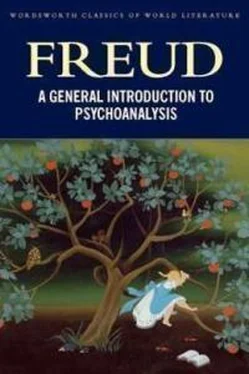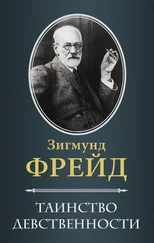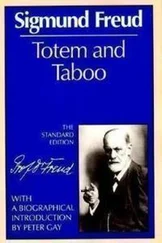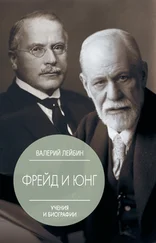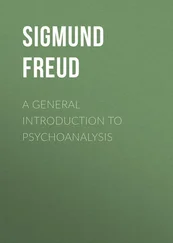Now I know you will say that these conceptions are as crude as they are fantastic, and not at all permissible in a scientific discussion. I know they are crude—indeed, we even know that they are incorrect, and if we are not very much mistaken we have a better substitute for them in readiness. Whether they will continue then to appear so fantastic to you I do not know. For the time being, they are useful conceptions, similar to the manikin Ampère who swims in the stream of the electric current. In so far as they are helpful in the understanding of our observation, they are by no means to be despised. I should like to assure you that these crude assumptions go far in approximating the actual situation—the two rooms, the watchman on the threshold between the two, and consciousness at the end of the second room in the role of an onlooker. I should also like to hear you admit that our designations— unconscious , fore–conscious , and conscious are much less likely to arouse prejudice, and are easier to justify than others that have been used or suggested—such as sub–conscious , inter–conscious , between–conscious , etc.
This becomes all the more important to me if you should warn me that this arrangement of the psychic apparatus, such as I have assumed in the explanation of neurotic symptoms, must be generally applicable and must hold for normal functioning as well. In that, of course, you are right. We cannot follow this up at present, but our interest in the psychology of the development of the symptom must be enormously increased if through the study of pathological conditions we have the prospect of finding a key to the normal psychic occurrences which have been so well concealed.
You will probably recognize what it is that supports our assumptions concerning these two systems and their relation to consciousness. The watchman between the unconscious and the fore–conscious is none other than the censor under whose control we found the manifest dream to obtain its form. The residue of the day's experiences, which we found were the stimuli which set off the dream, are fore–conscious materials which at night, during sleep, had come under the influence of unconscious and suppressed wishes. Borne along by the energy of the wish, these stimuli were able to build the latent dream. Under the control of the unconscious system this material was worked over, went through an elaboration and displacement such as the normal psychic life or, better said, the fore–conscious system, either does not know at all or tolerates only exceptionally. In our eyes the characteristics of each of the two systems were betrayed by this difference in their functioning. The dependent relation between the fore–conscious and the conscious was to us only an indication that it must belong to one of the two systems. The dream is by no means a pathological phenomenon; it may appear in every healthy person under the conditions of sleep. Any assumption as to the structure of the psychic apparatus which covers the development of both the dream and the neurotic symptom has also an undeniable claim to be taken into consideration in any theory of normal psychic life.
So much, then, for suppression. It is, however, only a prerequisite for the evolution of the symptom. We know that the symptom serves as a substitute for a process kept back by suppression. Yet it is no simple matter to bridge this gap between the suppression and the evolution of the substitute. We have first to answer several questions on other aspects of the problem concerning the suppression and its substantiation: What kind of psychological stimuli are at the basis of the suppression; by what forces is it achieved; for what motives? On these matters we have only one insight that we can go by. We learned in the investigation of resistance that it grows out of the forces of the "I," in other words from obvious and latent traits of character. It must be from the same traits also that suppression derived support; at least they played a part in its development. All further knowledge is still withheld from us.
A second observation, for which I have already prepared, will help us further at this point. By means of analysis we can assign one very general purpose to the neurotic symptom. This is of course nothing new to you. I have already shown it to you in the two cases of neuroses. But, to be sure, what is the significance of two cases! You have the right to demand that it be shown to you innumerable times. But I am unable to do this. Here again your own experience must step in, or your belief, which may in this matter rely upon the unanimous account of all psychoanalysts.
You will remember that in these two cases, whose symptoms we subjected to searching investigation, the analysis introduced us to the most intimate sexual life of these patients. In the first case, moreover, we could identify with unusual clearness the purpose or tendency of the symptoms under investigation. Perhaps in the second case it was slightly covered by another factor—one we will consider later. Now, the same thing that we saw in these two examples we would see in all other cases that we subjected to analysis. Each time, through analysis, we would be introduced to the sexual wishes and experiences of the patient, and every time we would have to conclude that their symptoms served the same purpose. This purpose shows itself to be the satisfaction of sexual wishes; the symptoms serve as a sexual satisfaction for the patient, they are a substitute for such satisfactions as they miss in reality.
Recall the compulsive act of our first patient. The woman longs for her intensely beloved husband, with whom she cannot share her life because of his shortcoming and weaknesses. She feels she must remain true to him, she can give his place to no one else. Her compulsive symptom affords her that for which she pines, ennobles her husband, denies and corrects his weaknesses,—above all, his impotence. This symptom is fundamentally a wish–fulfillment, exactly as is a dream; moreover, it is what a dream not always is, an erotic wish–fulfillment. In the case of our second patient you can see that one of the component purposes of her ceremonial was the prevention of the intercourse of her parents or the hindrance of the creation of a new child thereby. You have perhaps also guessed that essentially she strove to put herself in the place of her mother. Here again we find the removal of disturbances to sexual satisfaction and the fulfillment of personal sexual wishes. We shall soon turn to the complications of whose existence we have given you several indications.
I do not want to make reservations as to the universal applicability of these declarations later on, and therefore I wish to call to your attention the fact that everything that I say here about suppression, symptom–development and symptom–interpretation has been learned from three types of neuroses—anxiety–hysteria, conversion–hysteria, and compulsion–neuroses—and for the time being is relevant to these forms only. These three conditions, which we are in the habit of combining into one group under the name of " transference neuroses ," also limit the field open to psychoanalytic therapy. The other neuroses have not been nearly so well studied by psychoanalysis,—in one group, in fact, the impossibility of therapeutic influence has been the reason for the neglect. But you must not forget that psychoanalysis is still a very young science, that it demands much time and care in preparation for it, that not long ago it was still in the cradle, so to speak. Yet at all points we are about to penetrate into the understanding of those other conditions which are not transference neuroses. I hope I shall still be able to speak to you of the developments that our assumptions and results have undergone by being correlated with this new material, and to show you that these further studies have not led to contradictions but rather to the production of still greater uniformity. Granted that everything, then, that has been said here, holds good for the three transference neuroses, allow me to add a new bit of information to the evaluation of its symptoms. A comparative investigation into the causes of the disease discloses a result that may be confined into the formula: in some way or other these patients fell ill through self–denial when reality withheld from them the satisfaction of their sexual wishes. You recognize how excellently well these two results are found to agree. The symptoms must be understood, then, as a substitute satisfaction for that which is missed in life.
Читать дальше
